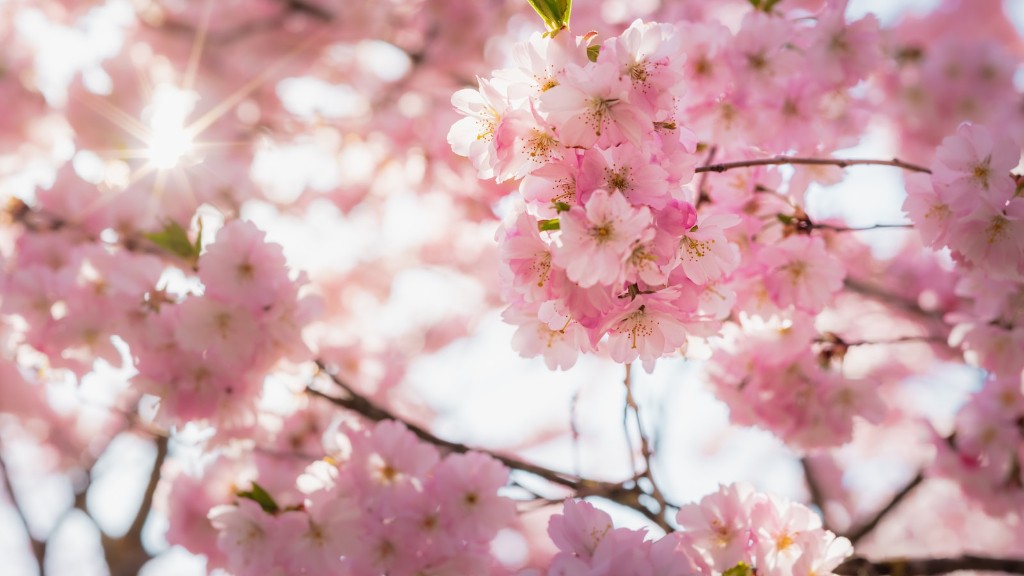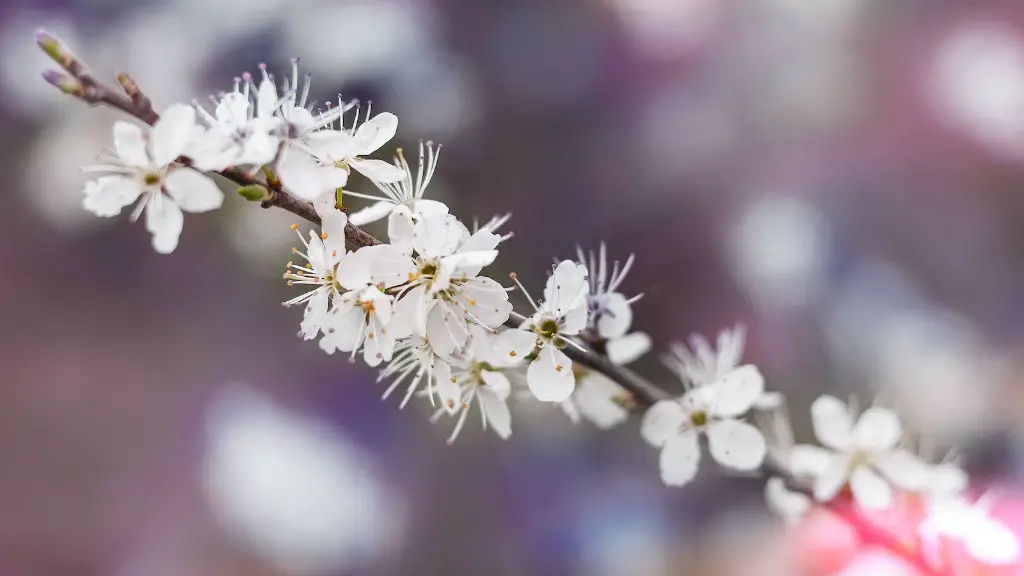Diseases Causing Cherry Tree Not Flowering
There are many diseases that can prevent cherry tree from flowering, such as brown rot, bacterial canker, and powdery mildew. Brown rot is the most common disease of cherry tree and it is caused by a fungal pathogen called Monilinia fructigena. This fungal pathogen can infect the flowers, twigs, fruits and shoots of the cherry tree and it can also cause the petals of flowers to turn brown and wilt. Bacterial canker is another disease that affects the blossoms, twigs and fruits of the cherry tree, and it is caused by a bacterial pathogen called Pseudomonas syringae pv. syringae. This pathogen can infect the flowers and fruits, causing them to become discolored and to eventually fall off. Powdery mildew is a fungal disease that appears as a powdery white or gray coating on the leaves and shoots of the cherry tree. If a cherry tree is affected by any of these diseases, it may struggle to flower, as the diseases can damage its flowers and leaves and prevent it from producing new flowers.
Environmental Factors Impacting Cherry Tree Not Flowering
Cherry tree may not flowering due to environmental factors such as cold temperatures, excessive phosphorus, too little water, or extreme fluctuations in these factors. Cold temperatures can reduce blossom production, causing flowers to drop before they can bear fruit. Excessive phosphorus levels can cause flowers not to form, as the nutrient uptake for blossoms is stunted. Water is also essential for flowering and if the cherry tree does not receive enough, it will struggle to produce blooms. Fluctuations in environmental factors, such as long periods of cold followed by warm weather, can also impact the cherry tree’s flowering capabilities.
Nutritional Deficiencies Impacting Cherry Tree Not Flowering
Nutrient deficiencies can also be a factor in cherry tree not flowering. Soil phosphorus levels, calcium, magnesium, and nitrogen levels should be tested to ensure that the tree is receiving the necessary nutrients. Magnesium deficiency can cause a cherry tree to not flower properly, while a phosphorus deficiency can lead to a decrease in the number of flowers produced. A nitrogen deficiency can also limit blossom production, creating an imbalance between vegetative growth and flowering.
Mitigating Diseases, Environmental and Nutritional Factors for Cherry Tree Flowering
To ensure that the cherry tree does flower, it is important to manage any diseases the tree is experiencing and to ensure the tree is receiving the correct balance of nutrients and adequate water. The use of fungicides such as Captan or chlorothalonil can help to mitigate brown rot, while the application of copper-based compounds can help to prevent bacterial canker. When it comes to nutrients, the soil should be tested to make sure the tree is not missing any important elements, and fertilizers should be used if necessary to supplement the soil. It is also important to monitor environmental conditions and make sure the tree is being protected from extreme temperatures, too much or too little water, and other changes in conditions.
Container Cherry Trees Not Flowering
Cherry trees grown in containers may struggle to produce flowers, as they are more susceptible to changing environmental conditions and may not receive the same level of nutrition as trees planted in the ground. Container cherry trees should be checked regularly for nutrient deficiencies, especially phosphorus and nitrogen. They should also be watered and monitored frequently to ensure they are receiving adequate amounts of water and that they are not exposed to extreme temperatures. If the foliage of the tree appears weak or anemic, it may be receiving too much or too little water or nutrition and can benefit from fertilizer or additional water.
Pruning and Training Affecting Cherry Tree Not Flowering
Pruning and training of the cherry tree can also affect its ability to produce and maintain flowers, as improper pruning or training can damage or obstruct flowers and inhibit flowering. Pruning and training should be done with the specific needs of the tree in mind, such as ensuring the tree has ample light and adequate space for flowering. When it comes to pruning, it is important to prune the branches after the flowers have bloomed in order to maximize flower production.
Beating Insects and Native Animals Attracted to Cherry Tree Flowers
Insects and native animals can also prevent the cherry tree from flowering, as some insects and animals feed on the flowers and buds of cherry tree. To prevent this, it is important to monitor the tree for any signs of infestation and use insecticides or deterrents such as sticky traps. Native animals, such as birds and squirrels, can be prevented from accessing the tree through the use of barriers or deterrents, such as bird spikes or loud noises.
Pest Control Methods to Increase Cherry Tree Flowering
To increase the cherry tree’s flowering capabilities, pest control methods should be implemented. To protect the tree from common pests such as aphids and spider mites, insecticides such as neem oil or insecticidal soaps can be used. To ensure effective pest control, it is important to follow the instructions on the insecticide’s label, as using too much can damage the tree.
Biological Control Practices to Help Cherry Tree Flowering
Biological control practices, such as introducing beneficial insects, can also help to improve the cherry tree’s flowering capabilities. Beneficial insects, such as ladybugs and lacewings, are useful for controlling pest populations as they feed on aphids, spider mites, and other pests that can damage the cherry tree’s flowers. Introducing these beneficial insects can help to protect the tree’s flowers and increase the cherry tree’s ability to flower.
Cherry Tree Variety Selection for Maximum Flowering
When selecting a cherry tree, it is important to choose a variety that is suited to the climate and that is known to produce lots of flowers. Different varieties of cherry tree are more or less vulnerable to diseases, extreme temperatures and pests, so it is important to choose one that is adapted to the local climate. It is also important to choose a variety that is known to be a prolific bloomer, as this will ensure that the cherry tree produces lots of blossoms.


